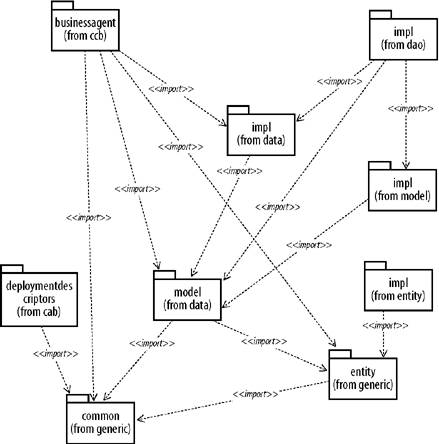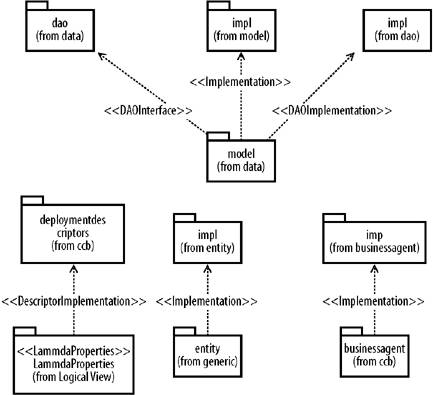Section 12.4. Besides UML
12.4. Besides UMLUML provides description that's difficult to match with plain text. Its formalism allows a few lines and boxes to unequivocally and immediately convey what would require time to assimilate from text. The text replaced by diagrams would be, at best, dull and legalistic, and at worst, vague, ambiguous, and open to interpretation. Either way, well-written UML is more effective. While it may be true that a picture is worth a thousand words, a picture with words is worth much more than just a picture. Perhaps in the context of MDA and executable models, UML can provide a minimum specification for an application generator. In most cases, complete system specification or system documentation requires commentary to explain, emphasize, and give nuance to the diagrams. Diagrams alone risk burying or glossing over details as much as text alone. Diagrams and text reinforce each other. You can describe the context and Figure 12-8. Package imports major points with text, then drive home those points with a good diagram and the formalism of UML. As seen throughout this chapter, you can't effectively document classes with large APIs on a single, class diagram. Hundreds of attributes and operations become insignificant on a diagram. The operation and attribute sections of a class box don't allow for descriptions. Tools such as Doxygen (http://www.doxygen.org) or Javadoc extract the most current source comments into searchable web pages. Though the details they present are likely to change and therefore will make diagrams obsolete, when they are made part of the software build process, they remain up to date with the latest software changes. Remember that diagramming requires neither model nor modeling tool. UML practitioners often simply draw diagrams by hand or with simple drawing tools. Modeling tools are expensive acquisitions, in terms of time and distraction, if not in money: open source or proprietary, UML tools take time to master. Whiteboards, notepads, and simple drawing tools deliver much project value with no learning curve. Use them until you are comfortable with UML and its place in the project. With a firm understanding of UML and your process, choosing a dedicated UML tool and changing your process to incorporate it becomes less risky. Figure 12-9. Code generation directives |
EAN: 2147483647
Pages: 132